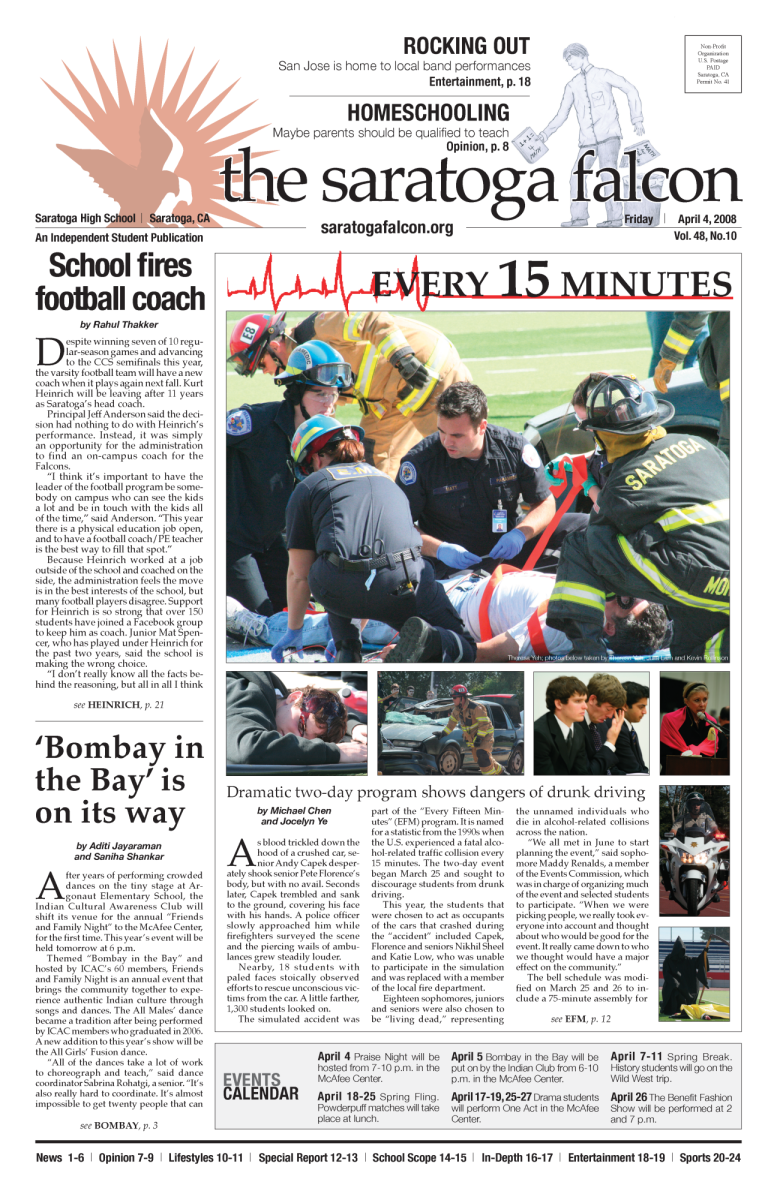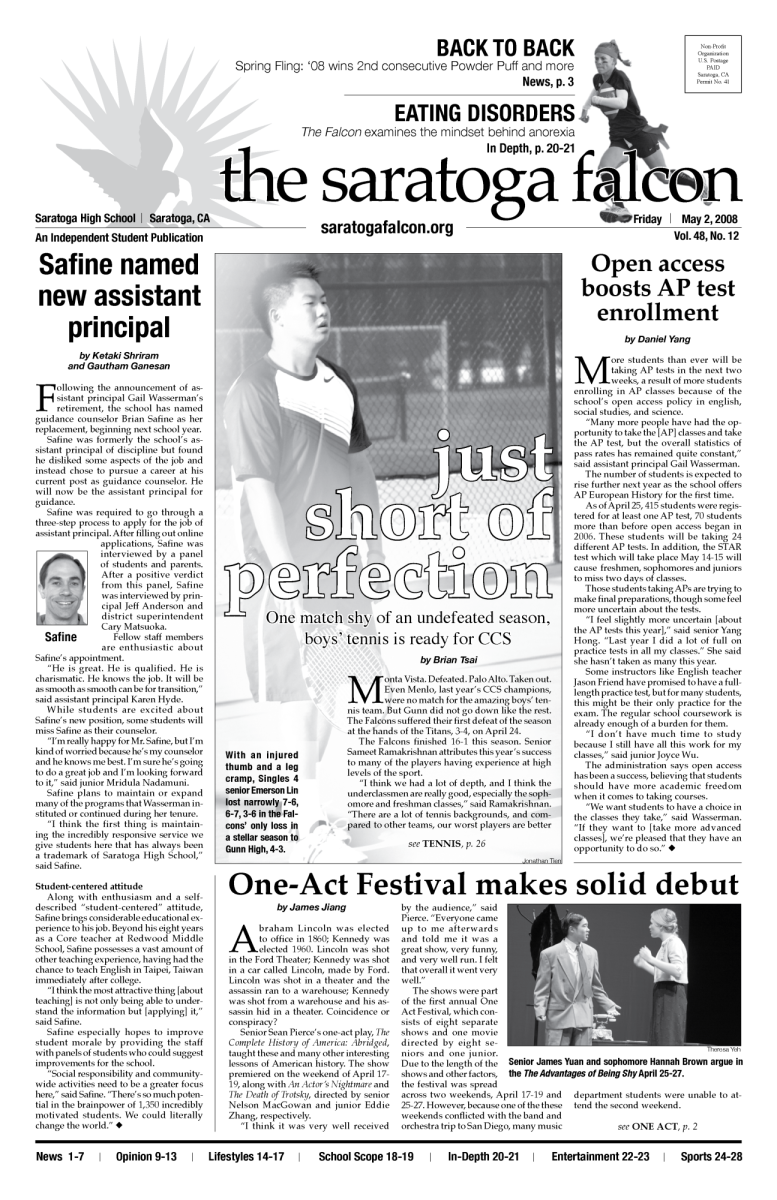Last year, students would cluster in the quad, chatting with friends during the school’s mid-morning tutorial. Some stood in front of the cafeteria, purchasing snacks, while others simply milled about in their favorite spots, getting breaths of fresh air before sitting in a classroom for another period.
Now, thanks to a major revamping of the school’s tutorial rules, the main quad inhabitants seem to be the crows and pigeons that pick at the crumbs lying on the ground. Students’ voices occasionally ring from a distance as they make their way to the library or a classroom. Administrators and other staff members patrol the halls, ushering students who loiter in the hallways into classrooms.
As students and teachers settle into the school year, many are adjusting to a new, stricter tutorial policy. Fearing that Saratoga High and Los Gatos High could be flagged by the state for lacking enough instructional minutes in a year, superintendent Mike Grove and the administrations at Saratoga and Los Gatos High implemented a new tutorial system in which students must remain in an area supervised by a certified staff member — a change that insures that tutorial will count toward the school’s 64,800 instructional minutes required each school year.
The change has elicited mixed reactions.
While the new policy may not deter all students from their previous activities, several still view the rules as an inconvenience. Junior Henry Weng said the new tutorial does not interfere with his normal routines but added that some rules are flawed.
“I’m OK with it overall, but the sign in process is a big inconvenience,” Weng said. “I feel like there could have been a better solution.”
Many other students echoed similar complaints about a sign-in process. Having to sign in and out of classrooms by filling out paper forms frequently takes several minutes as hoards of students cluster in doorways, jotting down their information, eager to move from one classroom to the next.
“Signing in and out of classrooms was quite messy because everyone wanted to leave their first-period class, and most classrooms were full,” sophomore Derek Hsu said. “The Student Center was full in the first 10 minutes on the first day, and because the library was closed, the large majority had to walk back to their first period. It was very messy.”
ASB leaders said they have not heard a lot of positive feedback from their peers. Having discussed the policy with the administration, junior class president Cynthia Zhang gathered that meeting the state requirements and not having extra school outweigh the students’ preference for an unrestricted tutorial.
“At first, I was upset about it, and I understand why students would be mad because it feels like something has been taken away from them,” Zhang said. “But we weren’t supposed to have a tutorial like that in the first place, so I’m grateful for the years we had with the free tutorial.”
Although Hsu said he does not feel the policies detract from his freedom, he agreed that the school should fix the clipboard system of signing in and out of classrooms. Hsu added that restrictions on the quad and the limited time to buy snacks during a mere 10-minute passing period between 10:15 and 10:25 add to the list of inconveniences.
For the most part, teachers interviewed by The Falcon said they’re adjusting to the changes. Science teacher Cheryl Lenz said her own children attended Branham High School four years ago, where a similar tutorial policy had been implemented. As a parent, she saw the benefits of a structured tutorial for her children’s learning. Even so, she said she understands that change can be hard.
“Instead of spending all their energy on fighting the change, students should find ways to work with it,” Lenz said. “For example, if they want to meet with friends during tutorial, they can now choose a class for all of them to meet. It might require a little organization, but if they have a negative reaction towards it, the whole year they will be chafing at the bit over tutorial.”
Physics and business teacher Kirk Davis said he sees “no other way” to meet the required instructional minutes other than by changing the length of the school day and advised students to try to remain positive.
“You can view it as a big imposition and grumble and fight it and all that, but it’s happening; you gotta do it,” Davis said. “So I would encourage everybody to make the most out of it they can. When life gives you lemons, make lemonade, right?”
Another source of hope for students is the possibility that changes to the bell schedule for next year could allow tutorials to revert to being more unstructured if the district was able to reach its 64,800 minutes in another way — perhaps by offering eight periods. A bell scheduling committee is expected to begin studying the optimal schedule for each school later in the year.



























